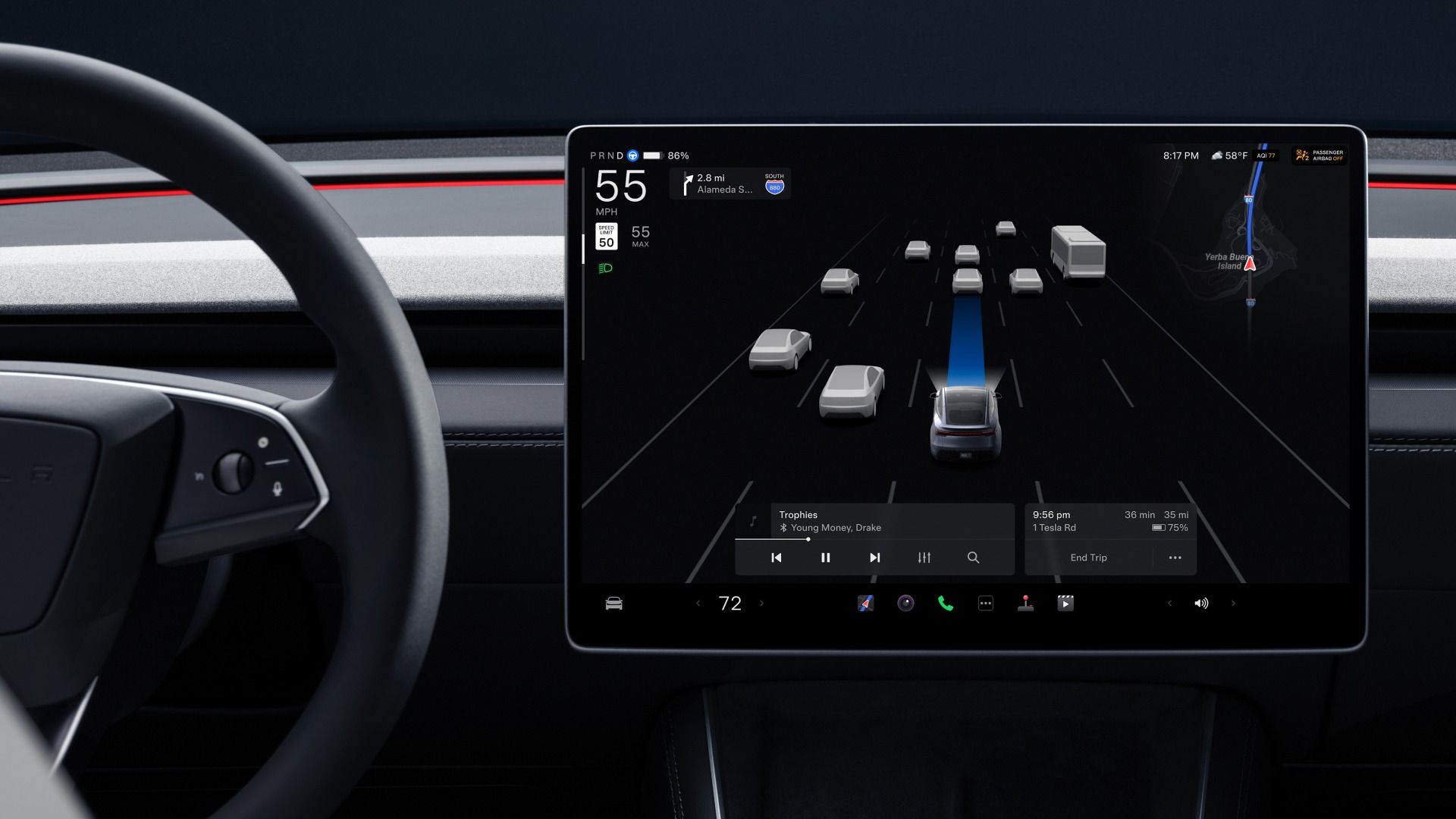Driverless Tesla robotaxis, disguised as Model Y crossovers, have already been spotted on public roads. Yes, the future is here, but the fact is, automakers go through a lot of hurdles to move forward. That’s about to change as the US Department of Transportation announced a major overhaul to how it greenlights fully autonomous vehicles. These changes mean we could soon see cars on public roads that have no steering wheels, pedals, or mirrors – and no drivers either.
Tesla
Tesla, Inc. is an American electric vehicle manufacturer largely attributed to driving the EV revolution. Through the Model S and subsequent products, Tesla has innovated and challenged industry conventions on numerous fronts, including over-the-air updates, self-driving technology, and automotive construction methods. Tesla is considered the world’s most valuable car brand as of 2023, and the Model Y the world’s best-selling car in the same year, but the brand’s greatest achievement is arguably the Supercharger network of EV charging stations.
- Founded
-
July 1, 2003
- Founder
-
Martin Eberhard, Marc Tarpenning
- Headquarters
-
Austin, Texas, USA
- Owned By
-
Publicly Traded
- Current CEO
-
Elon Musk
Under the previous rules, companies must apply for what’s called a Part 555 exemption through the National Highway Traffic Safety Administration (NHTSA) if they want to sell vehicles that don’t meet every traditional safety standard. The limit is 2,500 vehicles per year, per manufacturer. The problem? The process has been painfully slow, often dragging on for years without decisions, leaving innovation stuck in neutral.
Clearer Guidelines For Faster, Streamlined Process
Transportation Secretary Sean Duffy said the revamped process will finally allow regulators to keep pace with fast-moving autonomous driving technology. The updated rules will make the entire exemption system faster and more predictable. NHTSA also plans to release clearer guidelines and adopt a more flexible, ongoing oversight model that adjusts as the technology evolves.

Related
Tesla Worried Everyone Will Steal Its Self-Driving Ideas If It’s Forced To Report Incidents
Crash data is need-to-know information. And Tesla claims WaPo doesn’t need to know.
The agency says this approach doesn’t mean lowering safety standards. In fact, companies still need to prove their vehicles are just as safe – or safer – than those with human drivers and manual controls. But the new system will allow NHTSA to monitor how these vehicles perform over time and adapt to regulations as needed, rather than relying on a rigid, one-size-fits-all policy.
“The Part 555 exemption process has been rightly criticized for taking years – bogging developers down in unnecessary red tape that makes it impossible to keep pace with the latest technologies.”
– Sean P. Duffy, US Transportation Secretary
Fast-Tracking To Stay Competitive Globally
For automakers, this is a welcome shift. Some companies had previously backed away from self-driving plans, frustrated by red tape and regulatory uncertainty. GM closed down its Cruise robotaxi development last year, incorporating its operations back into the company’s technical teams. Ford announced a similar move, with the learnings from the project to be used in future vehicle architecture.

Related
How Self-Driving Cars Will Impact The Job Market
The arrival of autonomous vehicles will have an effect on every aspect of our lives, including the world of work.
Tesla, meanwhile, is about to launch its robotaxi service in Texas this summer, though its vehicles still include traditional controls… for now. Stepping back, this move by the government signals a turning point in terms of driverless technology. America is trying to reclaim its lead in the autonomous vehicle race, especially as countries ramp up their own.
#Driverless #Vehicles #Human #Controls #Coming #Sooner #Expected


